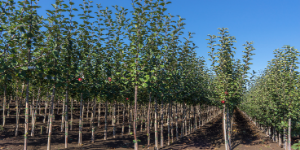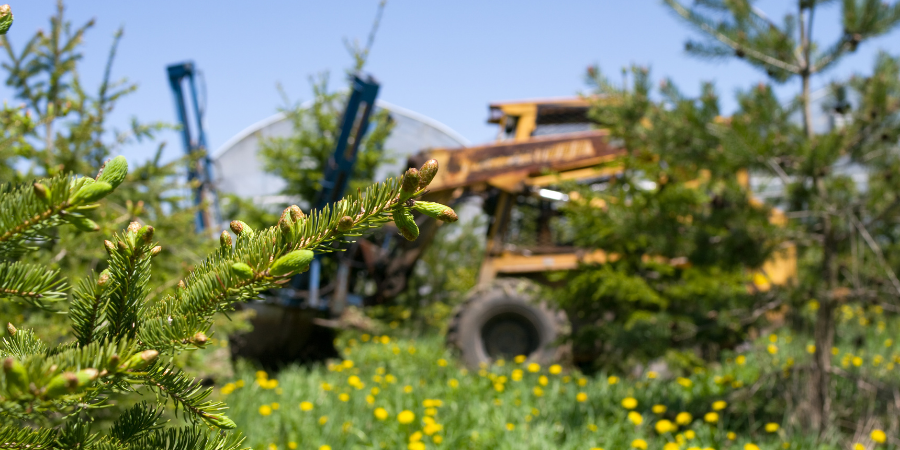Working with buyers and sellers across the country gives us the unique position of seeing what plants are requested repeatedly, which are widely available, and the ones that are SUPER difficult to find. We pulled our data and polled our team to get their take on which plants, in particular, are going to be high in demand this year but short on supply. We've also offered substitution suggestions whenever possible so you can stay ahead of the competition.
Ten plants that are high in demand but short on supply
Feb 25, 2021 8:00:00 AM / by LandscapeHub
A look at the trending plants selling on LandscapeHub
Feb 18, 2021 8:00:00 AM / by LandscapeHub
We’ve created the global industry data standard with the world's largest searchable plant database with over 44,000 plants mapped to-date. With that much data available to us, and a network of thousands of buyers searching, quoting, and ordering plants every day, we've gathered quite a bit of data on what's trending across plant categories.
Prepare for these four challenges facing the landscaping industry
Feb 11, 2021 8:00:00 AM / by LandscapeHub
While we see lots of opportunity for growth in the year ahead, it's essential to be aware of our industry's unique challenges. Some are new, while others are ongoing issues that we must continue to plan around. Please take a look below for the four we think are more important to keep track of this year, and be sure to check out our marketplace report for the full industry outlook.
A look at the data on the landscaping industry for 2021
Feb 4, 2021 1:08:20 PM / by LandscapeHub posted in Education
There is no mistaking that 2020 was an unprecedented year that affected industries worldwide, including the landscaping sector. The COVID-19 pandemic has impacted many businesses in our industry. It will continue to do so in the months ahead, but we at LandscapeHub are approaching 2021 with cautious optimism. The industry generates $99 billion annually, with 3.3% growth over the past five years, and employs over 1.1 million people nationwide. We are hopeful that a rebounding economy, nonresidential, and residential construction will continue to drive demand for landscaping services.
Four industry opportunities to take advantage of in 2021
Jan 21, 2021 1:13:14 PM / by LandscapeHub posted in Resources, Education, News & Trends
As economic activity rebounds from the 2020 COVID-19 pandemic, consumers and businesses will have a renewed ability to pay for professional landscaping (woot woot!). We've outlined four key opportunities to take advantage of to keep you excited and motivated for the year ahead.
The ability to show off your work in the form of an online portfolio is critical to helping you get more work, especially now when more people are conducting business online. When prospective customers check you out, a gallery of images showcasing your work needs to be a major part of it. It helps them imagine what you could do to their landscape.
Does your sourcing strategy need some work?
Nov 19, 2020 12:04:27 PM / by LandscapeHub posted in Education
There are lots of great reasons to have multiple sources for your products. A million things, big and small, can happen to compromise a single source. As a landscaping company, you probably already know the importance of having a network of trusted sources, but are you missing out on opportunity, time saving, and a chance for better margins by keeping your network closed?
4 landscaping industry opportunities to use to your benefit
Oct 29, 2020 1:45:34 PM / by LandscapeHub posted in Insider, Education
In a year like 2020, it's easy to look at the challenges facing our industry. However, as we move towards cooler temps, we are taking stock of opportunity areas for both landscape buyers and sellers to take advantage of in the year ahead. Now is a great time to start thinking about the business areas where you should invest in 2021. Not surprisingly, given the turn of events this year, investing in technology is a big one.
How to get your favorite suppliers on LandscapeHub
Oct 15, 2020 1:46:03 PM / by LandscapeHub posted in Education
LandscapeHub’s goal is to strengthen the green industry by providing solutions to reduce operational costs, generate market insights, improve workflow efficiency, and promote standardization. As a buyer, you probably find the value of LandscapeHub to be the ability to use one tool/platform to source and secure all your landscaping material needs, and we love to hear that! After all, our goal is to make it easier for buyers and suppliers to work together.
Addressing five of your most common questions about joining LandscapeHub
Oct 8, 2020 12:06:57 PM / by LandscapeHub posted in Education
We get it. LandscapeHub is a new way of doing business, different than the way you've bought and sold plant material in the past. And let's be honest, that can be a little scary, right? Change and growth often can be uncomfortable, but anything worth doing is bound to raise some questions.








.png)

